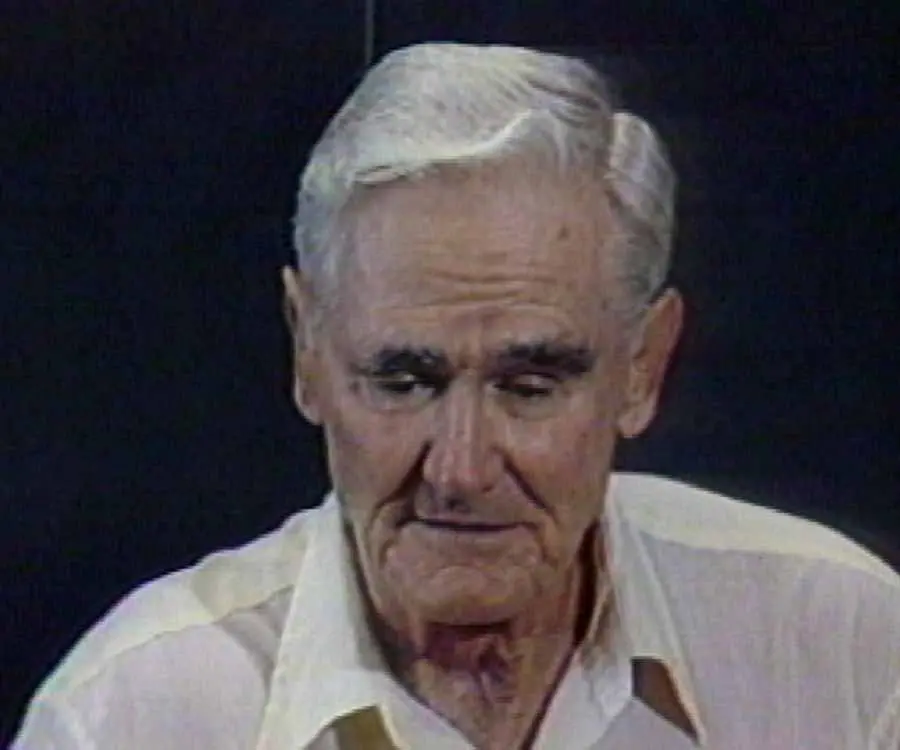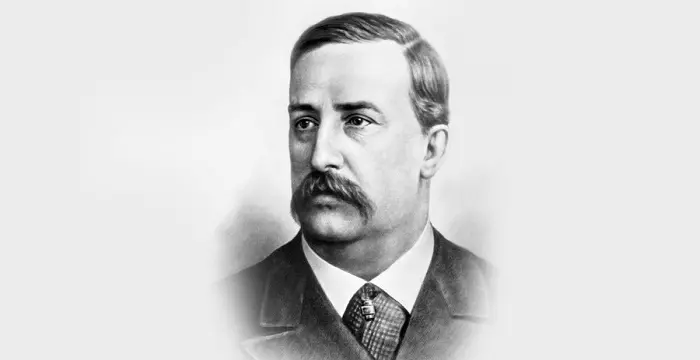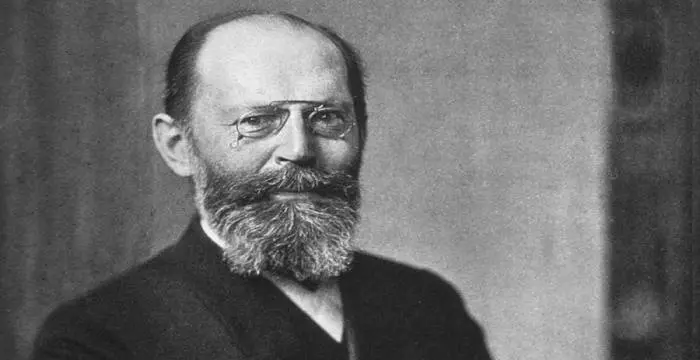Donald J. Cram - Chemists, Timeline and Facts
Donald J. Cram's Personal Details
Donald James Cram was an eminent American chemist who won the Nobel Prize for Chemistry in 1987
| Information | Detail |
|---|---|
| Birthday | April 22, 1919 |
| Died on | June 17, 2001 |
| Nationality | American |
| Famous | Scientists, Chemists, Organic Chemists |
| Spouses | Dr. Jane Maxwell, Jean Turner |
| Known as | Donald James Cram |
| Cause of death |
|
| Birth Place | Chester, Vermont |
| Gender | Male |
| Father | William Cram |
| Mother | Joanna Cram |
| Sun Sign | Taurus |
| Born in | Chester, Vermont |
| Famous as | Chemist |
| Died at Age | 82 |
// Famous Scientists
Juliane Koepcke
Juliane Koepcke is a German-Peruvian biologist, who was the lone survivor among the 92 passengers and crew of the ill-fated LANSA Flight 508 that crashed in the Peruvian rainforest on 24 December 1971. Know more about her life in this biography.
Henry Cavendish
Henry Cavendish was a theoretical chemist and physicist, renowned for discovery of hydrogen and calculation of the mass of earth. To know more about his childhood, profile, timeline and career read on
Konstantin Tsiolkovsky
Konstantin Tsiolkovsky was a Russian rocket scientist and a pioneer of astronautics. This biography provides detailed information about his childhood, family, personal life, career, achievements, etc.
Donald J. Cram's photo
Who is Donald J. Cram?
Donald James Cram was an eminent American chemist who, along with Charles J. Pedersen and Jean-Marie Lehn, won the prestigious Nobel Prize for Chemistry in 1987 “for their development and use of molecules with structure-specific interactions of high selectivity”. The trio was the originator of the field of ‘host-guest chemistry’. Cram received his B.S. degree in Chemistry from the Rollins College in Florida followed by a M.S. degree in Organic Chemistry from the University of Nebraska. In 1947, he received his Ph.D degree from Harvard University and after spending three months as a postdoctoral scholar at Massachusetts Institute of Technology, he joined the faculty of the University of California at Los Angeles to become a full Professor by 1956. For over forty years, he taught more than 12,000 undergraduates, supervised nearly 120 doctoral and 100 postdoctoral students, and published more than 400 papers and eight books. Alongside his distinguished academic career, he remained committed to chemical research till the very end. He invented the ‘Cram's Rule’ which provided a methodology for calculating the result of nucleophilic attack of carbonyl compounds. He also expanded upon Pedersen’s innovative synthesis of ‘crown ethers’ and built a range of differently shaped molecules that could attach selective atoms to themselves owing to their corresponding three-dimensional structure.
// Famous Organic Chemists
Dmitri Mendeleev
Dmitri Mendeleev was a Russian chemist who is best known for his discovery of the periodic law. Check out this biography to know about his childhood, life, achievements, works & timeline
Aleksandr Borodin
Aleksandr Borodin was a prodigal Russian music composer and scientist. This biography gives detailed information about his childhood, life, works, achievements and timeline.
Hermann Emil Fischer
Emil Fischer was a Nobel Prize winning chemist from Germany who is known for inventing the ‘Fischer Projection’ method. To know more about his childhood, career, profile and timeline read on
Childhood & Early Life
Donald J. Cram was born on 22 April 1919, in Chester, Vermont, USA to a Scottish immigrant father, William, and a German émigré mother, Joanna. Before his birth, his parents had migrated from Ontario, Canada to rural Chester. They already had three daughters and he was their fourth born and the only male child.
His mother, Joanna, was a lively person with a rebel streak since childhood. William on the other hand, was a romantic cavalry officer who later worked as a successful lawyer. Unfortunately, he died of pneumonia before young Cram’s fourth birthday. As a result, his mother was left all alone to raise the four children.
Donald J. Cram’s education started at home when he was only four and half year old. The habit of reading was inculcated in the children by their mother. Before long, he could read different children’s books on his own.
Two years later, the family shifted to Brattleboro, Vermont where he grew up on Aid to Dependent Children. He had an adventurous childhood and since he was intelligent and curious, he managed to land odd jobs to support his music lessons. By his 18th birthday, he had worked at least eighteen different jobs.
Later in his life, he admitted that his real education happened outside classroom, “in a private world of books and brooks”. He read extensively the work of famous authors like Dickens, Kipling, Scott, Shaw, and Shakespeare and spent time with nature.
Nevertheless, he did attend school and studied at the Winwood High School in Long Island, N.Y. where he took a course in chemistry, learnt geometry on his own, and won a Rollins College National Honorary Scholarship.
Career
From 1938 to 1941, Donald J. Cram attended Rollins College, in Winter Park, Florida. Apart from regular studies, he worked as an assistant in the chemistry department, participated in theatre and chapel choir, produced a minor radio programme, and even acquired an airplane pilot’s license.
During the summers of 1938–1941, he worked for the National Biscuit Company in New York City, initially as a salesman and then as an assessor of cheeses for moisture and fat content. The sales tenure helped him to learn about ethnic groups and big city street-life.
At Rollins, he soon became popular for building his own chemistry equipment. He graduated with a B.S. in Chemistry in 1941 and decided to pursue an academic research career in chemistry.
In 1942, he graduated from the University of Nebraska with a M.S. in Organic Chemistry, under the supervision of Dr. Norman O. Cromwell.
From 1942 to 1945, when World War II was underway, he worked at Merck & Co laboratories, researching penicillin with mentor Dr. Max Tishler.
After the war ended in 1945, Dr. Tishler arranged for him to attend Harvard University. Armed with the National Research Council Fellowship, he completed his Ph.D in Organic Chemistry in 1947. The thesis was done under the supervision of Professor Louis Fieser at Harvard. He was also influenced by Professors Paul D. Bartlett and Robert B. Woodward.
After receiving his doctorate degree in 1947, he spent three months at the Massachusetts Institute of Technology as an American Chemical Society postdoctoral fellow, working for Professor John D. Roberts.
He then joined as Assistant Professor in the University of California at Los Angeles (UCLA). By 1957, he was promoted to full Professor. Later in 1985, he became the first S. Winstein Professor of Chemistry at the UCLA and continued in the position till 1995.
As a teacher, he was very popular among his students. For over 40 years as a Professor at UCLA, he taught some 12,000 undergraduates, supervised about 120 Ph.D and 100 postdoctoral students, and published more than 400 papers and eight books.
Major Works
Donald J. Cram made significant contributions to the chemistry of phenonium ions, asymmetric induction, carbanions, paracyclophanes, and the use of stereochemistry for explaining reaction mechanisms.
He formulated the ‘Cram's Rule’ in 1952, which provided a methodology for calculating the result of nucleophilic attack of carbonyl compounds.
He expanded upon Charles Pedersen's innovative synthesis of ‘crown ethers’. After Pedersen discovered crown ethers, molecules that can detain certain metallic atoms, Cram successfully built a range of molecules that could attach selective atoms and molecules to themselves owing to their corresponding three dimensional structure. This made it feasible to create chemical compounds through chemical reactions.
He published over 400 research papers and eight books on Organic Chemistry, and mentored graduate, doctoral and post-doctoral students from 21 different countries.
Awards & Achievements
1961, he was elected to the National Academy of Sciences.
In 1965, he received the ACS Award for Creative Work in Synthetic Organic Chemistry
In 1967, he was elected to the American Academy of Arts and Sciences.
In 1974, he received the ACS Cope Award for Distinguished Achievement in Organic Chemistry and was also named California Scientist of the Year.
In 1985, he received the Southern California ACS Tolman Award and the Chicago Section ACS Willard Gibbs Medal.
In 1985, he was also named the first proprietor of the Saul Winstein Chair in Organic Chemistry at UCLA and won the coveted Roger Adams Award.
Along with Charles J. Pedersen and Jean-Marie Lehn, he won the prestigious Nobel Prize for Chemistry in 1987 “for their development and use of molecules with structure-specific interactions of high selectivity”.
In 1992, he received the National Academy of Sciences Award in Chemical Science, followed by the National Medal of Science in 1993.
Personal Life & Legacy
Cram was married twice. His first wife was Jean Turner who had a Master's degree in social work from Columbia University. His second wife, Dr. Jane Maxwell, is a former Professor of Chemistry at Mt. Holyoke College.
He was an avid reader and enjoyed reading both classical and modern literature. In his spare time, he enjoyed sports like surfing, tennis and skiing. He also loved to sing folk songs and play the guitar.
He died of cancer on 17 June 2001, at the age of 82.
Trivia
He played a significant role in the progress of the Chemistry and Biochemistry Department of UCLA. He was full of life and amused his students by strumming his guitar and singing folk songs.
When he won his Nobel Prize, a delegate of the Royal Swedish Academy of Sciences called up to pass on good wishes to him. By mistake, the call went to a California based carpet cleaner also named Donald Cram. As a result, the carpet cleaner got to enjoy his two minutes of fame.
// Famous Chemists
Henry Cavendish
Henry Cavendish was a theoretical chemist and physicist, renowned for discovery of hydrogen and calculation of the mass of earth. To know more about his childhood, profile, timeline and career read on
Walter Kohn
Nobel Laureate Walter Kohn was an Austrian-born American theoretical chemist and physicist. Check out this biography to know about his childhood, life, achievements, works & timeline.
Jabir Ibn Hayyan
Jabir Ibn Hayyan was a medieval era polymath. Check out this biography to know about his life, works and achievements.
Donald J. Cram's awards
| Year | Name | Award |
|---|---|---|
Other | ||
| 0 | Nobel Prize in Chemistry (1987) | |
| 0 | Glenn T. Seaborg Medal (1989) | |
| 0 | National Medal of Science (1993) | |
| 0 | Guggenheim fellowship (1955) | |
Donald J. Cram biography timelines
- // 22nd Apr 1919Donald J. Cram was born on 22 April 1919, in Chester, Vermont, USA to a Scottish immigrant father, William, and a German émigré mother, Joanna. Before his birth, his parents had migrated from Ontario, Canada to rural Chester. They already had three daughters and he was their fourth born and the only male child.
- // 1938 To 1941From 1938 to 1941, Donald J. Cram attended Rollins College, in Winter Park, Florida. Apart from regular studies, he worked as an assistant in the chemistry department, participated in theatre and chapel choir, produced a minor radio programme, and even acquired an airplane pilot’s license.
- // 1938 To 1941During the summers of 1938–1941, he worked for the National Biscuit Company in New York City, initially as a salesman and then as an assessor of cheeses for moisture and fat content. The sales tenure helped him to learn about ethnic groups and big city street-life.
- // 1941At Rollins, he soon became popular for building his own chemistry equipment. He graduated with a B.S. in Chemistry in 1941 and decided to pursue an academic research career in chemistry.
- // 1942In 1942, he graduated from the University of Nebraska with a M.S. in Organic Chemistry, under the supervision of Dr. Norman O. Cromwell.
- // 1942 To 1945From 1942 to 1945, when World War II was underway, he worked at Merck & Co laboratories, researching penicillin with mentor Dr. Max Tishler.
- // 1945 To 1947After the war ended in 1945, Dr. Tishler arranged for him to attend Harvard University. Armed with the National Research Council Fellowship, he completed his Ph.D in Organic Chemistry in 1947. The thesis was done under the supervision of Professor Louis Fieser at Harvard. He was also influenced by Professors Paul D. Bartlett and Robert B. Woodward.
- // 1947After receiving his doctorate degree in 1947, he spent three months at the Massachusetts Institute of Technology as an American Chemical Society postdoctoral fellow, working for Professor John D. Roberts.
- // 1952He formulated the ‘Cram's Rule’ in 1952, which provided a methodology for calculating the result of nucleophilic attack of carbonyl compounds.
- // 1957He then joined as Assistant Professor in the University of California at Los Angeles (UCLA). By 1957, he was promoted to full Professor. Later in 1985, he became the first S. Winstein Professor of Chemistry at the UCLA and continued in the position till 1995.
- // 19611961, he was elected to the National Academy of Sciences.
- // 1965In 1965, he received the ACS Award for Creative Work in Synthetic Organic Chemistry
- // 1967In 1967, he was elected to the American Academy of Arts and Sciences.
- // 1974In 1974, he received the ACS Cope Award for Distinguished Achievement in Organic Chemistry and was also named California Scientist of the Year.
- // 1985In 1985, he received the Southern California ACS Tolman Award and the Chicago Section ACS Willard Gibbs Medal.
- // 1985In 1985, he was also named the first proprietor of the Saul Winstein Chair in Organic Chemistry at UCLA and won the coveted Roger Adams Award.
- // 1987Along with Charles J. Pedersen and Jean-Marie Lehn, he won the prestigious Nobel Prize for Chemistry in 1987 “for their development and use of molecules with structure-specific interactions of high selectivity”.
- // 1992 To 1993In 1992, he received the National Academy of Sciences Award in Chemical Science, followed by the National Medal of Science in 1993.
- // 17th Jun 2001He died of cancer on 17 June 2001, at the age of 82.
// Famous American peoples
Wentworth Miller
Wentworth Miller is an American actor and screenwriter who achieved recognition for his role in the TV series ‘Prison Break’.
Jason Simpson
Jason Simpson is the son of former NFL running back, broadcaster and actor O. J. Simpson. Check out this biography to know about his childhood, family, life, and little known facts about him.
Melissa Brim
Melissa Brim is the ex-girlfriend of former professional boxer Floyd Mayweather Jr. Check out this biography to know about her birthday, childhood, family life, achievements and fun facts about her.
Skai Jackson
Skai Jackson is an American child actress with huge fan following. Find more about her family & personal life, relationships, facts and more.
Joyce Meyer
Joyce Meyer is a Christian author and speaker. This biography provides detailed information about her childhood, life, achievements, works & timeline
Zoe LaVerne
Zoe LaVerne is an American musical.ly star. Check out this biography to know more about her family, personal life, including her age, birthday, etc.
Donald J. Cram's FAQ
What is Donald J. Cram birthday?
Donald J. Cram was born at 1919-04-22
When was Donald J. Cram died?
Donald J. Cram was died at 2001-06-17
Which age was Donald J. Cram died?
Donald J. Cram was died at age 82
Where is Donald J. Cram's birth place?
Donald J. Cram was born in Chester, Vermont
What is Donald J. Cram nationalities?
Donald J. Cram's nationalities is American
Who is Donald J. Cram spouses?
Donald J. Cram's spouses is Dr. Jane Maxwell, Jean Turner
What is Donald J. Cram's cause of dead?
Donald J. Cram dead because of Cancer
Who is Donald J. Cram's father?
Donald J. Cram's father is William Cram
Who is Donald J. Cram's mother?
Donald J. Cram's mother is Joanna Cram
What is Donald J. Cram's sun sign?
Donald J. Cram is Taurus
How famous is Donald J. Cram?
Donald J. Cram is famouse as Chemist














